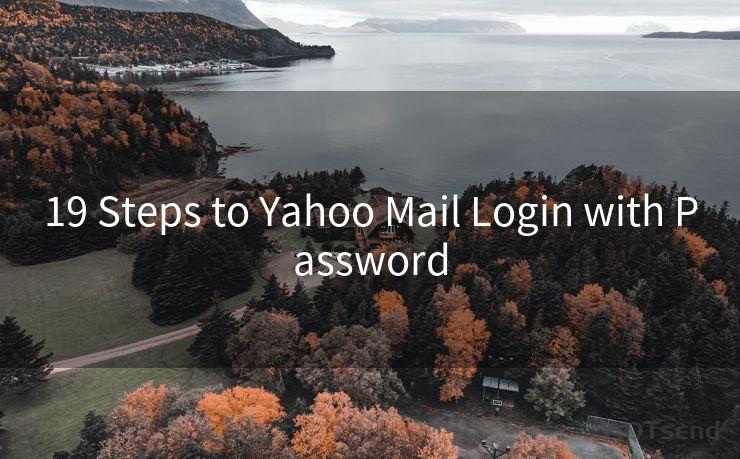18 Sophos UTM OTP Best Practices
Hello everyone, I’m Kent, the website admin. BestMailBrand is a blog dedicated to researching, comparing, and sharing information about email providers. Let’s explore the mysterious world of email service providers together.




When it comes to network security, Sophos UTM (Unified Threat Management) stands as a robust solution for businesses seeking comprehensive protection. One of the key features of Sophos UTM is its support for One-Time Password (OTP) authentication, which adds an extra layer of security to remote access and VPN connections. In this blog post, we'll explore 18 best practices for implementing Sophos UTM OTP to ensure optimal security.
1. Understanding OTP
Before diving into the best practices, it's crucial to understand what OTP is and how it works. OTPs are dynamically generated passwords that are valid for only one login session or transaction. They provide an additional security measure by ensuring that even if a password is intercepted, it cannot be reused.
2. Integrating OTP with Sophos UTM
Sophos UTM supports various OTP solutions, such as RADIUS or LDAP-based OTP servers. It's essential to integrate these services securely and test them thoroughly before deployment.
3. Strong Authentication Policies
Implement strong authentication policies that require OTP usage for remote access. This ensures that only authorized users with valid OTPs can gain access to the network.
4. Regular OTP Updates
Regularly update OTPs to minimize the risk of them being compromised. Set policies to expire OTPs after a certain period or number of uses.
5. Multi-Factor Authentication
Combine OTP with other authentication methods, such as biometrics or smart cards, for a stronger security posture. This multi-factor authentication approach significantly reduces the risk of unauthorized access.
6. Secure OTP Delivery
Ensure that OTPs are delivered securely to users, either via encrypted channels or secure hardware tokens. Avoid using unsecured methods like SMS or email for OTP delivery.
7. User Education and Training
Provide regular training to users on the importance of OTPs and how to use them securely. Educated users are less likely to fall victim to phishing attacks or other scams targeting OTPs.

8. Monitoring and Logging
Enable comprehensive monitoring and logging of OTP activities. This helps detect any suspicious activity and provides valuable forensic data in case of a security incident.
9. Emergency Access Plans
Develop emergency access plans in case OTP systems fail. Ensure there are alternative methods to verify user identity and grant access in such situations.
10. Regular Security Audits
Conduct regular security audits to assess the effectiveness of your OTP implementation. This includes testing the system's resilience against common attacks.
11. Hardware and Software Compatibility
Ensure that your chosen OTP solution is compatible with your existing hardware and software infrastructure. Incompatibility issues can lead to security gaps.
12. Physical Security
If using hardware tokens for OTP generation, ensure they are physically secure. Implement policies to prevent loss or theft of these tokens.
13. Secure Backup and Recovery
Maintain secure backups of OTP systems and have a robust recovery plan in place. This ensures business continuity in case of system failures or disasters.
14. Compliance with Regulations
Ensure that your OTP implementation complies with relevant industry regulations and standards, such as PCI DSS or HIPAA.
15. Ongoing Threat Intelligence
Stay updated with the latest threat intelligence related to OTP systems. This helps you proactively mitigate emerging risks.
16. Secure Development Practices
If customizing or integrating OTP solutions, follow secure development practices to minimize vulnerabilities.
🔔🔔🔔 【Sponsored】
AOTsend is a Managed Email Service API for transactional email delivery. 99% Delivery, 98% Inbox Rate.
Start for Free. Get Your Free Quotas. Pay As You Go. $0.28 per 1000 Emails.
You might be interested in:
Why did we start the AOTsend project, Brand Story?
What is a Managed Email API, How it Works?
Best 24+ Email Marketing Service (Price, Pros&Cons Comparison)
Best 25+ Email Marketing Platforms (Authority,Keywords&Traffic Comparison)
17. Limiting OTP Scope
Restrict the use of OTPs to only critical systems and applications. Avoid unnecessary exposure by limiting their scope.
18. Continuous Improvement
Continuously evaluate and improve your OTP implementation based on user feedback, security audits, and industry best practices.
By following these 18 best practices, you can significantly enhance the security of your Sophos UTM deployment with OTP authentication. Remember, security is an ongoing process, and it's crucial to stay vigilant and proactive in protecting your network assets.




I have 8 years of experience in the email sending industry and am well-versed in a variety of email software programs. Thank you for reading my website. Please feel free to contact me for any business inquiries.
Scan the QR code to access on your mobile device.
Copyright notice: This article is published by AotSend. Reproduction requires attribution.
Article Link:https://www.bestmailbrand.com/post2094.html











